From Juiced Bikes, a guide to rebates and other incentives for E-Bike purchases in the United States. As of July 2022, 12 states are represented.
Comprehensive Guide to State & Local E-Bike Rebates and Tax Credits

You begin to interest me…vaguely
From Juiced Bikes, a guide to rebates and other incentives for E-Bike purchases in the United States. As of July 2022, 12 states are represented.
Comprehensive Guide to State & Local E-Bike Rebates and Tax Credits

The Radpower rear rack is frequently (and currently) out of stock. It’s a bit hard to find concrete information on what other brands of racks fit on the Radmini, let alone photos of them installed. Some commenters have recommended Topeak racks, but there’s several versions to choose from. I tried the Topeak Explorer.
Here are some photos of the Explorer on a 2019 Radmini. Short version: it fits. There are at least three different holes near the dropouts that the rack can be installed on, resulting in three different heights. The highest hole put the rack closest to the seat but too high above the wheel for my tastes. Using one of the holes that the derailleur guard attaches to (the matching hole on the other side is unused) didn’t work because part of the rack stay rubbed against the bike frame and the rack couldn’t be leveled. I settled on attaching the rear stay to the same hole that the rear fender attaches to. The bolts that came with the Topeak rack are long enough that the rack and the fender can be attached together.
The Radmini’s taillight cable is long enough that, after snipping four zipties that hold it to the frame, it’s possible to attach the taillight to the rack without needing an extension cable.


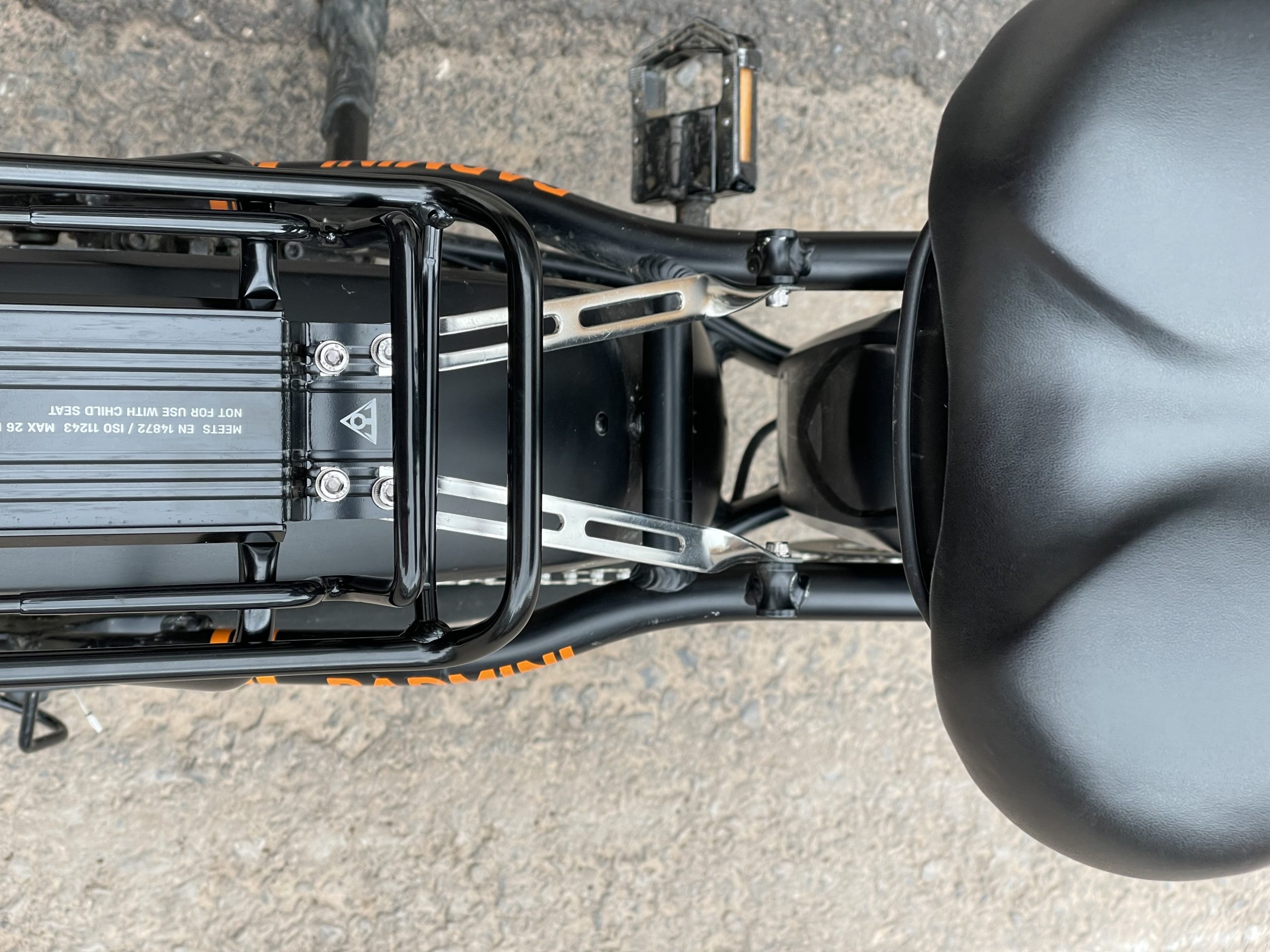
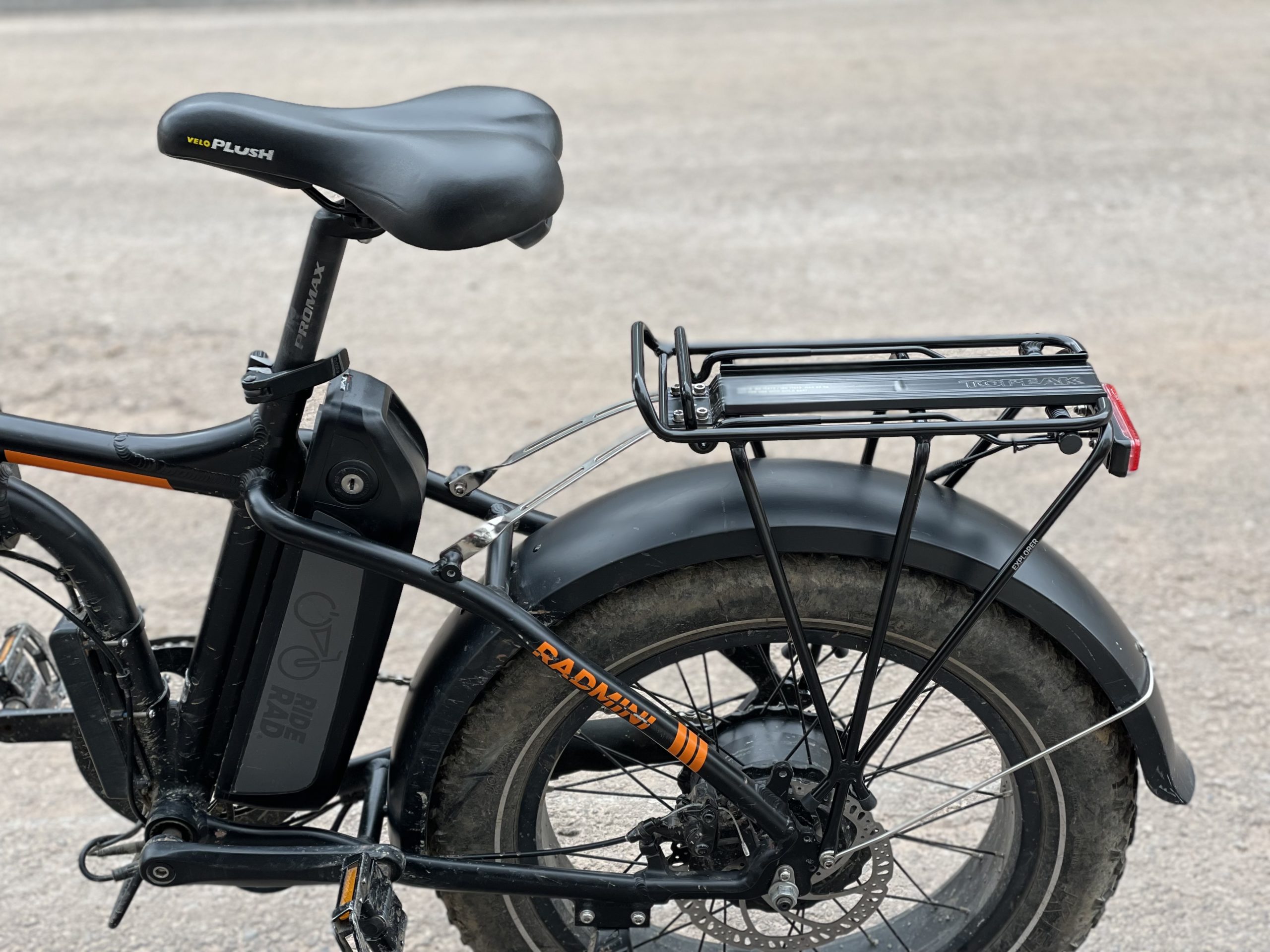
The Topeak Explorer rack also has a spring-loaded hinged bar on the rack that can hold down a jacket or other light things. It also works with the Topeak MTX QuickTrack system. It A rack without the spring, but otherwise identical, is available for a few dollars less.
So far, the rack and bag (Topeak Trunk Bag MTX EX) are tight and rattle-free.


The Rack: Topeak Explorer (Non-Disc) (W/ Spring)
The Bag: MTX Trunkbag EX.

With an elevation of about 200 feet, it’s not much of a mountain, but the lakes were created over a century ago to produce ice. In 1914, you could buy 100 pounds of ice for 30 cents from the Princeton Ice Company.
Most of the trails are for hikers only, but there are paved multi-use paths around the edge of the park, a road leading up to Palmer Lake, and a single unpaved trail for bikes that crosses over the outflow for the lake.





The Rogers House is a fine example of 18th century pattern brick architecture that unfortunately was neglected long enough that by the time funding was acquired, the only option was to preserve it as a stabilized ruin. Mercer County acquired the house in 1970; the preservation project was not completed until 2019. Still, a stabilized ruin is better than a collapsed house.
“Pattern brick” means that letters and numbers are built into the walls using glazed brick ends inset among unglazed brick stretchers. On one end is “1751” commemorating when the house was built (although there has been debate about whether the third digit is a “5” or “6”). On the opposite side are the letters “J + R R” for John and Rachel Rogers, the original homeowners. The rest of the walls are built a Flemish bond with alternating brick headers and stretchers.
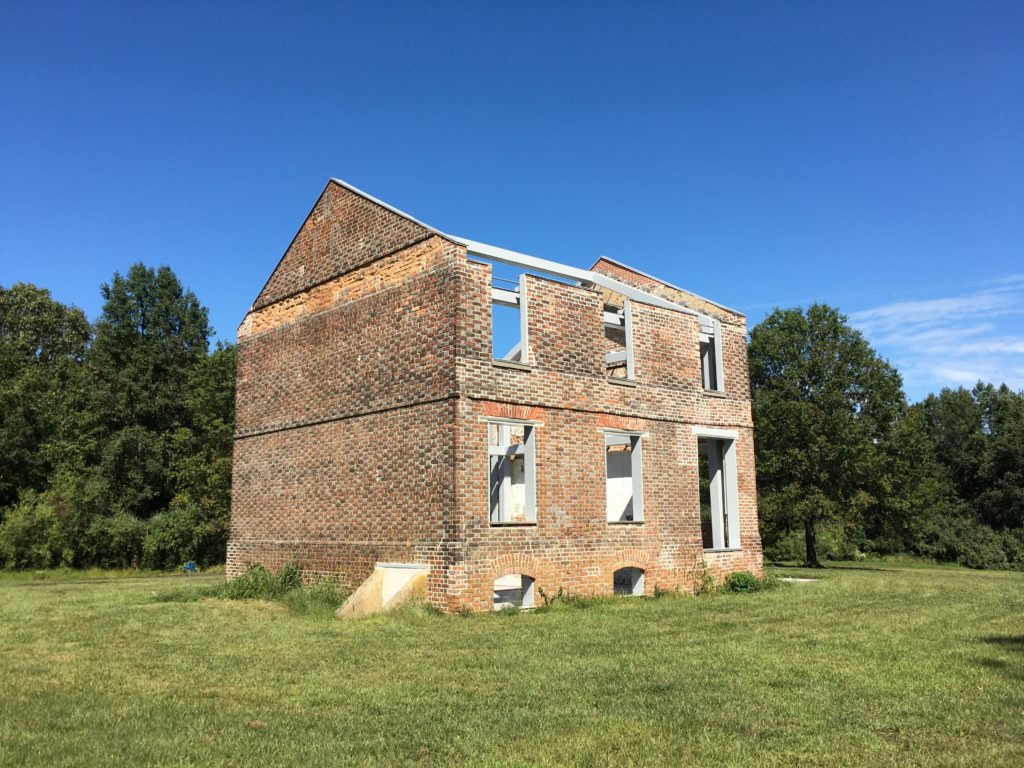
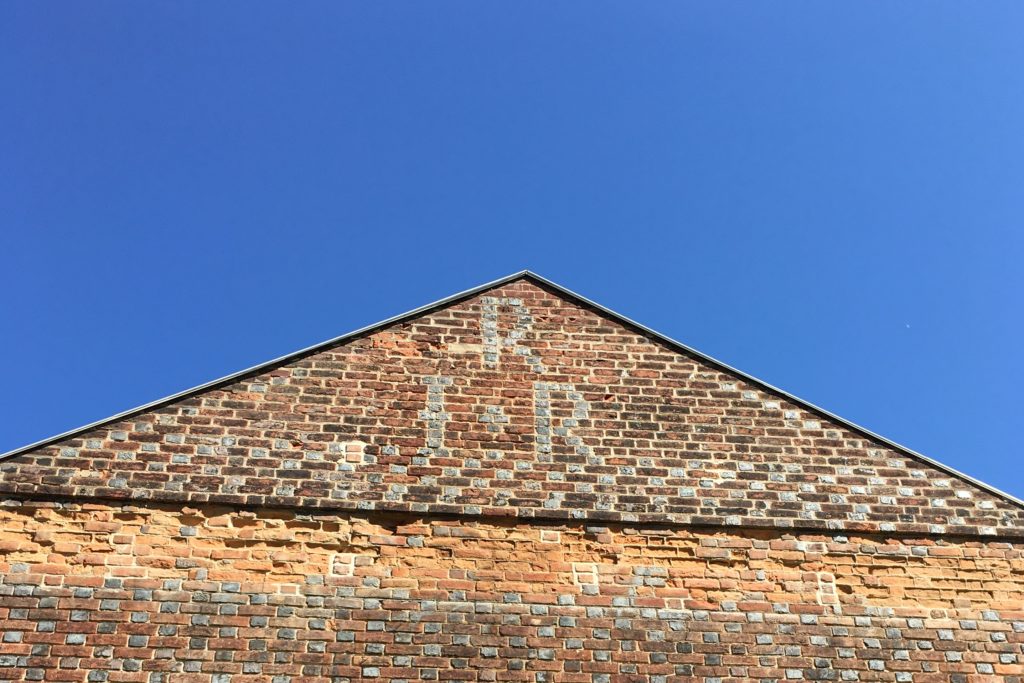
Yes, although not that easily. One of the selling points of folding fatbikes is their enhanced portability. Folding them potentially makes it easier to carry them in a car without a bike rack. But the ebikes are still heavy, bulky, and take up a lot of space.
On the new (2014+) Jeep Cherokees, the hatch opening is narrow, compared to similar-sized SUVs, and the cargo floor is only 36.1 inches wide between the wheelwells. Even when it’s folded in half, it’s nearly impossible to fit the Radpower Radmini in without putting down the back seats. On its side, the bike takes up most of the cargo area. The low ceiling means you risk scratching the headliner if you put it in upright, although once it’s in, you could probably squeeze a second folded e-bike alongside it. Most of the scratches on my Radmini – and all the scratches in the back of the Jeep – are from loading and unloading the bike.


The official dimensions of the 2019 Jeep Cherokee cargo area are 25.8 cubic feet behind the rear seats and 54.7 cu ft with the second row folded down. That’s less than the otherwise similar-sized Subaru Forester, which has 28.9 and 70.9 cu ft of space, respectively, behind the second row and first row seats.

Some would call the region through which it passes “desolate”; a better word would be “subtle”
A.D. Pierce, Iron in the Pines 1957

By the 1700s, a road, which likely followed a pre-existing Native American trail, ran from Camden, New Jersey, to the port town of Tuckerton on the Atlantic coast. According to local histories, to make their travel to yearly meetings easier, Quakers built a bridge over the Batsto River around 1772. The bridge predictably became known as the Quaker Bridge, and the road that passed over it became Quaker Bridge Road. In the 1800s, horse-drawn stage coaches regularly carried both mail and passengers through the Pine Barrens along this route.
In 1809, Arthur and Elizabeth Thompson opened the Quaker Bridge Hotel, also known as Thompson’s Tavern, just south of the bridge. The tavern remained open until at least 1850. Any remnants of the building vanished many years ago.
The area is now part of Wharton State Forest and Quaker Bridge Road is still a sandy trail through the barrens. On a pleasantly warm November day, there were few other people around: another (non-electric) fat bike, some hikers, a big dog, a couple of motorcycles, one jeep. From Atsion, a former company town and farming community, to the Quaker Bridge is about four miles. With some diversions, my round trip was 15 miles.



Fall colors are appearing in the Pine Barrens. I rode about 10 miles on parts of the Mt. Misery trail and Glass House Road in Brendan Byrne State Forest, which provide a mix of paved roads, wide graded sand roads, and single track closely hemmed by bushes and trees. I must have been the first visitor that morning, because I was constantly riding through webs spanning the trail and when I stopped for a bit, there were at least three spiders still hanging on to the front of my bike.



Near the end of the ride, the Reeves cranberry bogs provided a peerless photographic opportunity. The bogs were created by William H. Reeves at the beginning of the twentieth century and remained in operation for at least half a century.
The roads around the bogs had some soft sand. The RadMini did not seem to have a problem with it, but I did almost wipe out plowing through a turn a little too fast.
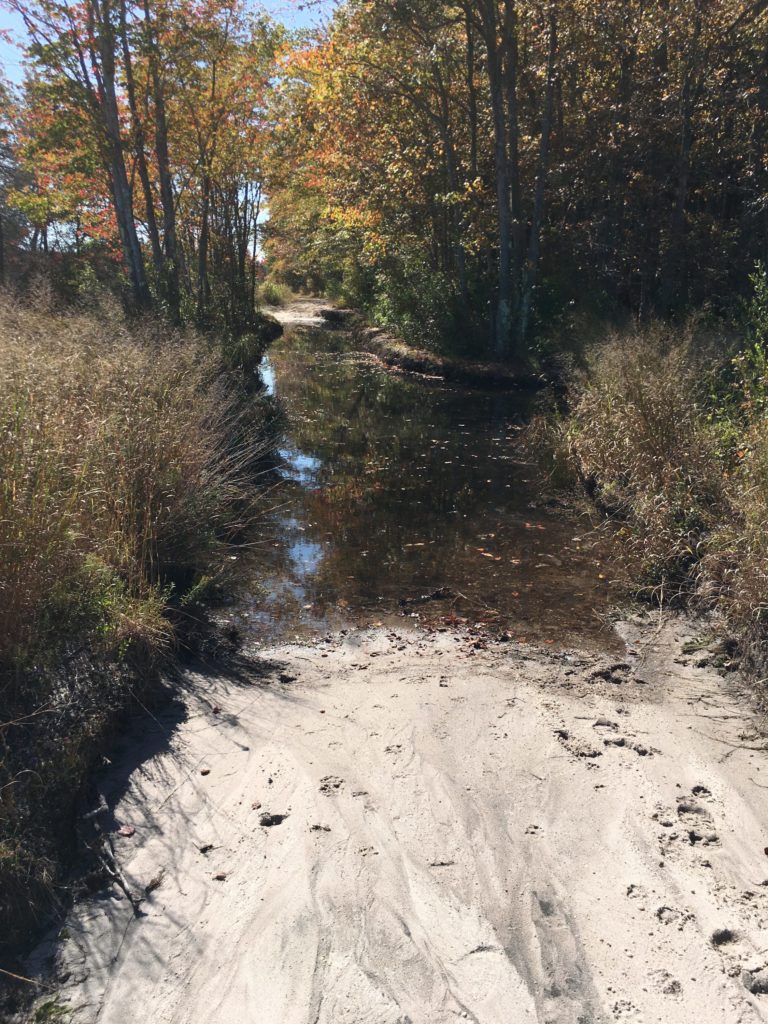
Another quick ride, on both single track and the paved bike path. The lake here was constructed in the 1970s by damming Assunpink Creek. It’s used as a U.S. Olympic training site for rowing.


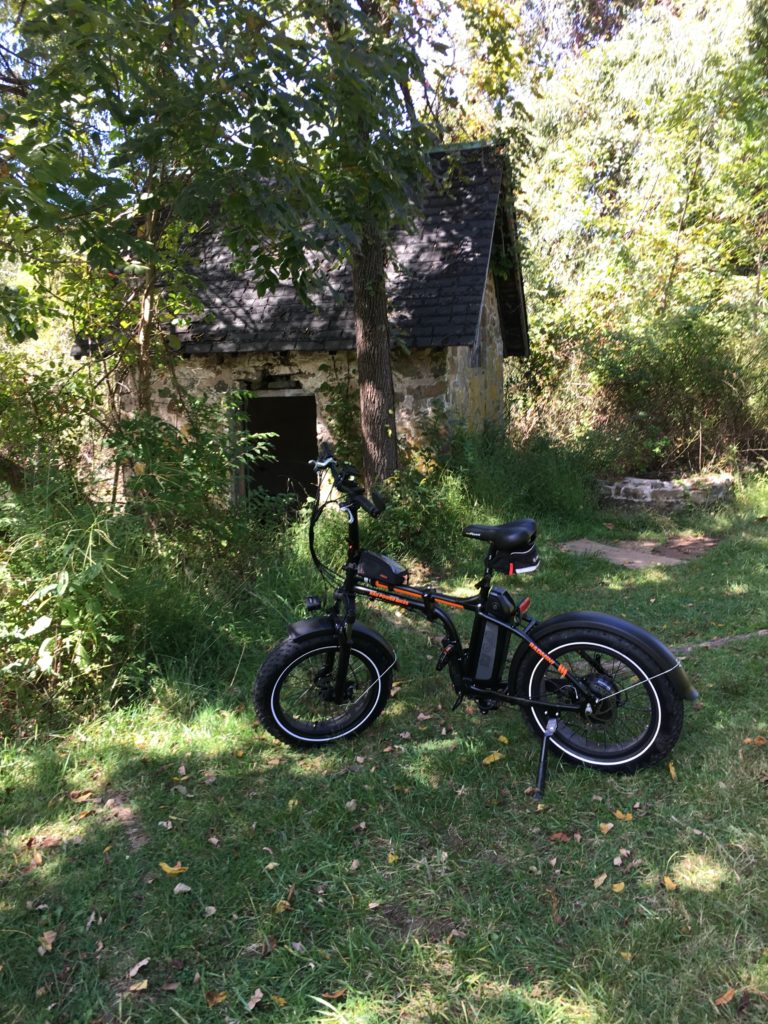

A quick, 5 mile out-and-back ride along the Ridge Trail in the Ted Stiles Preserve at Baldpate Mountain, New Jersey.